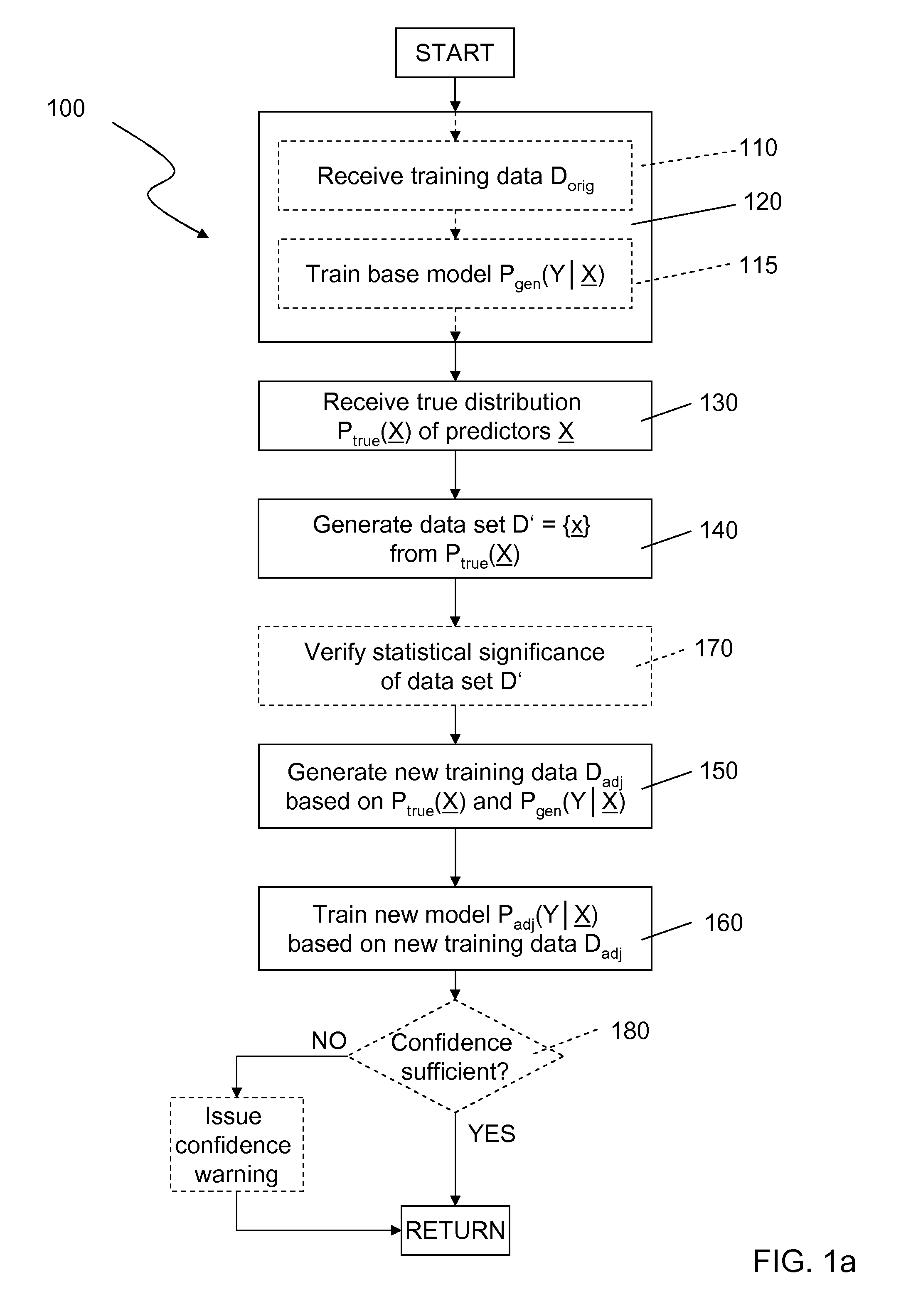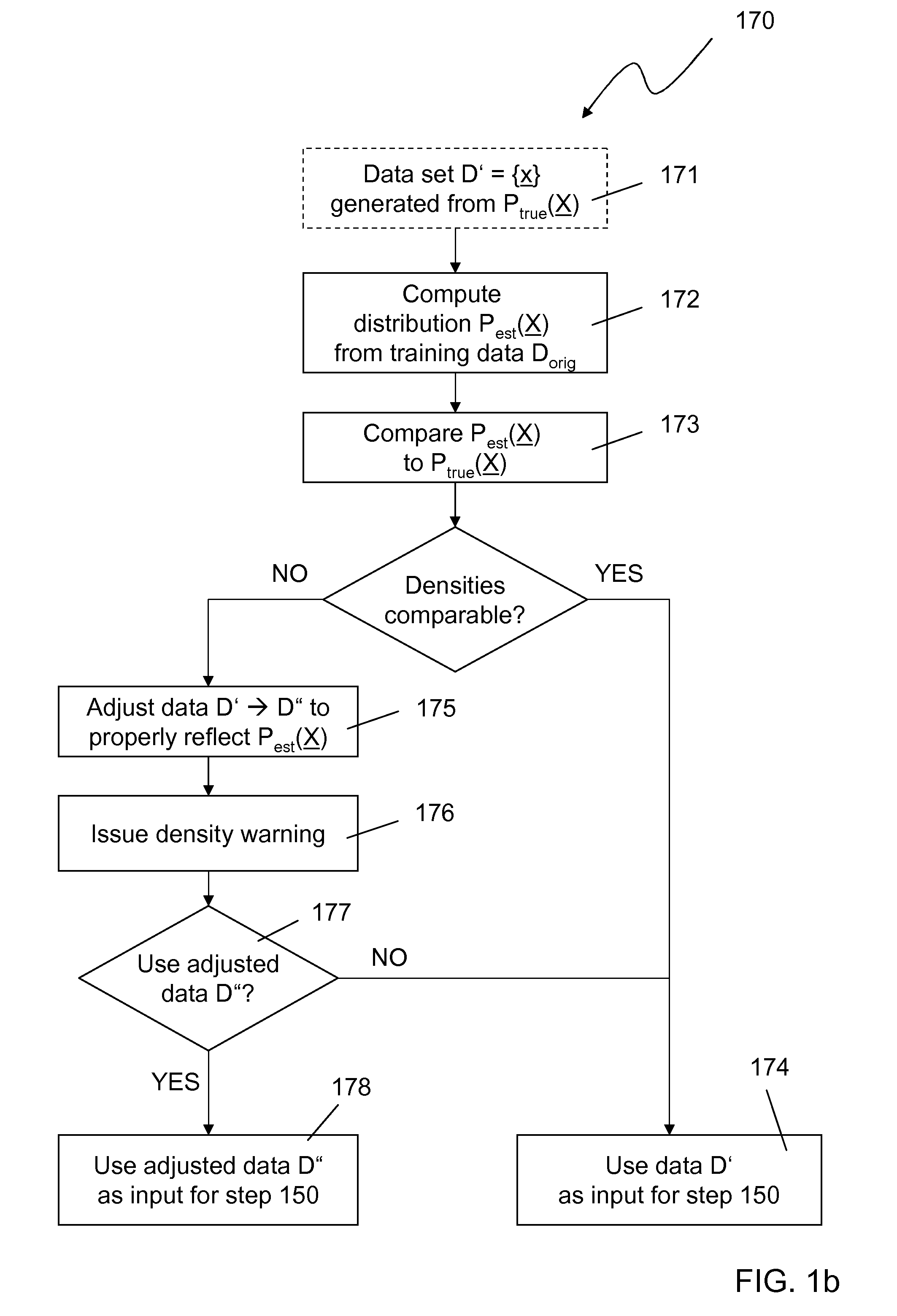Predictive modeling
a prediction model and modeling technology, applied in the field of prediction modeling, can solve the problems of noisy training set of examples, inaccurate reflection, and often not being the case, and achieve the effect of computational efficiency
- Summary
- Abstract
- Description
- Claims
- Application Information
AI Technical Summary
Benefits of technology
Problems solved by technology
Method used
Image
Examples
Embodiment Construction
[0025]FIG. 1a depicts a schematic flow diagram of a method 100 for determining a probability distribution P(Y|X) which predicts the probability of a specific outcome Y given a predefined set of features X. Here, X denotes a vector of variables (indicators) that describe influence factors and a single variable Y (value) that describes the prediction. Note that in the following, the variable X will be referred to by the terms “feature”, “predictor” and “indicator” interchangeably, and the variable Y will be referred to by the terms “value”, “label” or “prediction”. All variables can be numeric or categorical. If the value variable Y is categorical, the method solves a classification problem, if it is numerical, it solves a regression problem. Both cases can be treated in a similar fashion.
[0026]The modeling process is based on an original set Dorig of training data; Dorig contains tuples of the form (x,y) where xεX (i.e. x is an element of the set of indicators) and yεY (i.e. y is an ...
PUM
 Login to View More
Login to View More Abstract
Description
Claims
Application Information
 Login to View More
Login to View More - R&D
- Intellectual Property
- Life Sciences
- Materials
- Tech Scout
- Unparalleled Data Quality
- Higher Quality Content
- 60% Fewer Hallucinations
Browse by: Latest US Patents, China's latest patents, Technical Efficacy Thesaurus, Application Domain, Technology Topic, Popular Technical Reports.
© 2025 PatSnap. All rights reserved.Legal|Privacy policy|Modern Slavery Act Transparency Statement|Sitemap|About US| Contact US: help@patsnap.com



